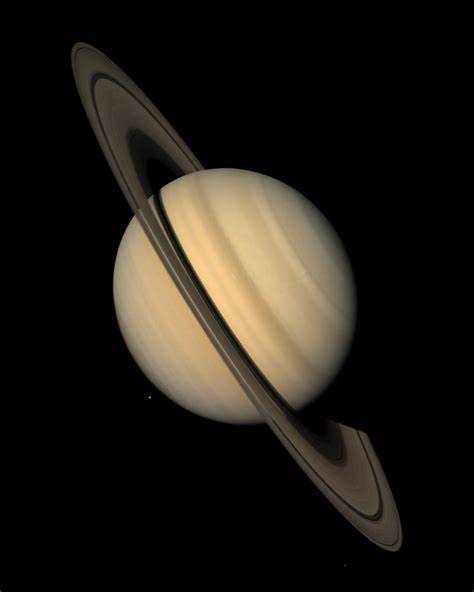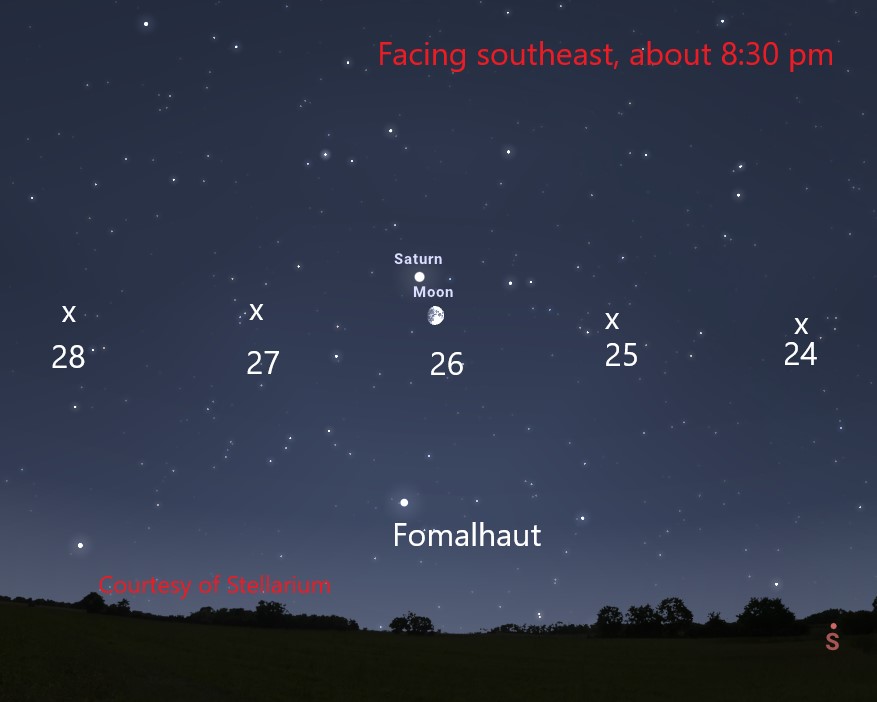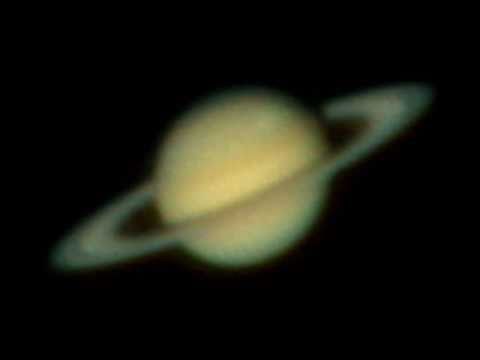
Saturn as imaged by Voyager 2, in 1981 (courtesy NASA)
STUNNING SATURN
Since I wrote about Venus’ dramatic departure from the evening sky this past July, there has been a dearth of easily visible planets, but that has now come to an end. Although nowhere near as brilliant as Venus is at its best, the Sixth Planet is easily seen, in spite of the immense 800+ million miles of space that span the distance between it and your eyes.As shown on the map below, this fall, Saturn shines as the only fairly bright “star” in the southeastern sky during the early evening, with dimmer Fomalhaut glimmering below it. Saturn will appear about as bright as the brighter stars in the sky, or only about 1/100 as bright as dazzling Venus, which currently can be seen in the east before sunrise, for all of you early risers. However, this relative dimness is solely due to Saturn’s great distance from Earth and the Sun. Saturn would shine more than 100 times brighter than Venus, if it could be seen at the same distance. As our Moon orbits the Earth, it appears to pass Saturn the sky each month, as shown in the chart below.

A view of the southeastern sky during the early evening hours during September. The moon passes through this area between Sept. 24-28.
In Roman mythology, Saturn served as the god of time, among other things, and peace and wealth were said to reign as long as he served as king of the gods. Saturn’s mythology tended to be mixed with that of Kronos, his counterpart in Greek mythology, once the Romans conquered that area. It was foretold that Kronos one day would be overthrown by his children, and in order to avoid that fate, he swallowed each of them. Kronos’ grief-stricken spouse Rhea decided to wrap a stone in baby clothes, and he swallowed that instead, thus allowing son Zeus to grow to maturity, set free his siblings, and carry out the prophecy.
Take a close look, and you may notice that Saturn shines more steadily than the other bright stars in the sky. It may have a slight yellowish tint upon close inspection, and this becomes more apparent if you use binoculars. If you substitute a small telescope instead, the shape of Saturn’s rings becomes more and more evident with the greater magnification. In my long years of stargazing, it is the sight of these rings that has provoked more oohs and aahs from guests than anything else.

Saturn as imaged by our Sky Ranger and by the Voyager 2 spacecraft (Courtesy NASA).
Saturn’s great distance means that it has an immense distance to travel around the Sun, and it takes almost 30 years to complete one orbit. Some of you may remember the “Great Conjunction” in which Jupiter passed Saturn in 2020. Since then, Saturn has gone only about one tenth of the way around the Sun, while Jupiter has traversed about one fourth of its twelve-year orbit. Thus, the two are not very close together in the sky anymore, with Jupiter running about two hours behind Saturn in their race around the sky, shining very low in the east during evening hours this month.
Learn more about finding Saturn, Jupiter, and other bright stars and constellations in “Autumn Adventure,” our next Gateway to the Stars program, held on the Gateway Arch Entrance Plaza at 6:30 pm on Friday, September 22nd. The upcoming solar eclipses on October 14 & April 8 will also be discussed, and free solar glasses will be available. Weather permitting, this program will be followed by free telescope viewing, also held on our Entrance Plaza.
